Juniper "Gold Star": description and cultivation
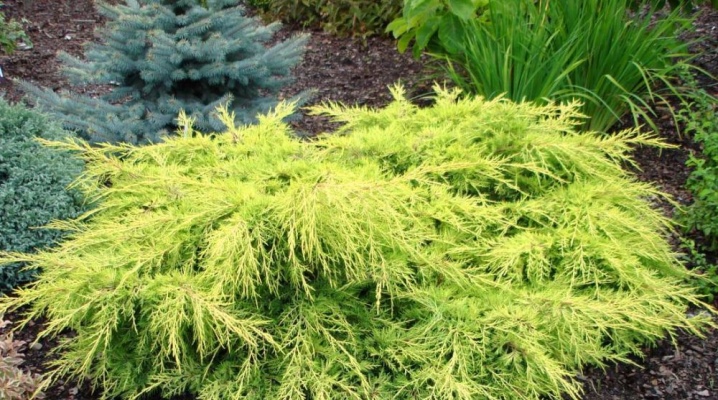
Juniper "Gold Star" - one of the shortest representatives of Cypress. This ephedra has an unusual crown shape and brightly colored needles. The plant was the result of hybridization of varieties of Chinese and Cossack junipers, it was created specifically for landscape design as a ground cover.
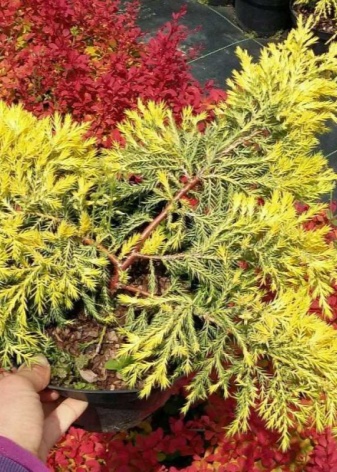

Description
The Gold Star is a small tree with horizontally growing side branches. The central shoots are erect, and near the edge of the crown they are creeping, while the habit outwardly repeats the outlines of the star. The height of the plant does not exceed 60 cm, the branches are quite long - 1.5 meters or more.
It has a stem, which makes it possible to grow the "Golden Star" as a dwarf tree, while the lowered shoots give this plant a resemblance to weeping forms.
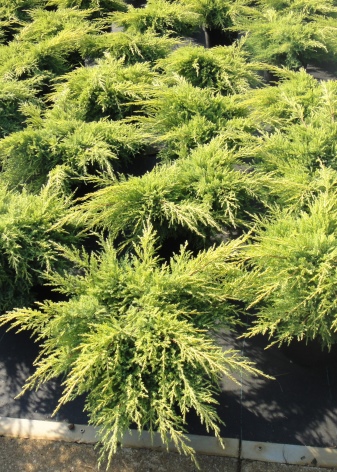

The perennial bark is pale green with a slight brownish tint, new branches are closer to a deep beige color scheme. The surface is usually uneven and flaky. Needles on one plant can be of several types - near the trunk it is needle-like, and near the shoots it is scaly, collected in whorls. The color of the needles is not uniform: in the center of the bush it is dark green, along the edges - rich yellow, with the onset of autumn it gradually changes its shade to brown.
Spherical cones with a high content of essential oils. The surface of the fruit is glossy with a noticeable glaucous coating. Each cone develops 3 seeds, peduncles are not formed every year and in very small quantities. The root system belongs to the fibrous surface type, the diameter of the root circle is about 40-50 cm.
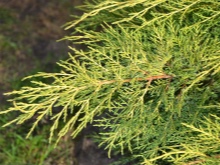


Juniper grows rather slowly, the annual increase in size does not exceed 1.5 cm in height and 4-5 cm in width. As soon as the "Gold Star" reaches 8 years of age, the growth of the bush stops. The size of the juniper directly depends on the habitat: in open areas, they are always smaller than in trees growing near reservoirs with a slight darkening.
"Gold Star" is characterized by an average degree of drought resistance - at elevated temperatures and lack of water, the growth and development of the plant slows down significantly. At the same time, frost resistance is quite high, the juniper easily tolerates a drop in temperature to -28 degrees, which makes it especially popular in central Russia and more northern regions.
Please note that juniper cones and branches are unsuitable for human consumption due to the high content of toxins in the composition, therefore they cannot be used in cooking.
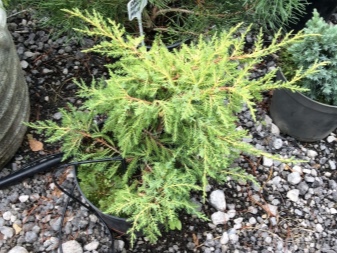

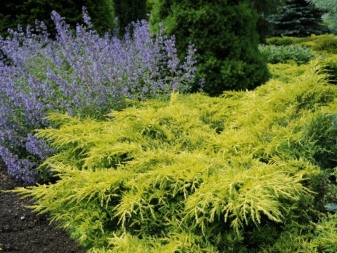

Landing
Juniper "Gold Star" is undemanding to the chemical composition of the soil, it can grow and develop well in soils with a high salt content. However, for the plant, the looseness and fertility of the land, as well as the absence of high-lying groundwater, are of fundamental importance. Gold Star is a light-loving culture. She will feel most comfortable if she is in the shade for several hours a day, but it is not worth planting it near tall trees. In their shade, the dense crown of a juniper quickly loses its decorative effect, the needles become smaller, the shoots stretch out, the color becomes faded, in some cases the branches dry out.
A juniper seedling can be purchased in a specialized nursery, or you can grow it yourself. The only requirement for future planting material is a strong, well-formed root without signs of damage and rot, smooth pale green bark and the indispensable presence of needles on the branches. Before planting on a permanent site, the roots should be placed in a weak solution of potassium permanganate for 1.5-2 hours, and then kept for about half an hour in any growth stimulator.
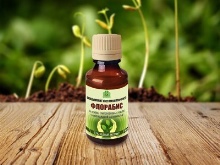

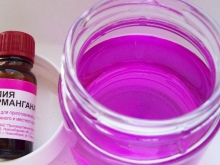
The planting hole begins to be prepared a couple of weeks before disembarkation. To do this, the site is well dug up and the roots of the plants are uprooted. To make the soil looser, light and well-drained, the soil is mixed with river sand and peat, compost or rotted manure is added to increase the fertility and nutritional value of the soil. The hole is prepared in such a way that its width is 20-25 cm greater than the diameter of the root, and the height is determined from the calculation: the length of the root from the neck plus 25-30 cm.On average, the depth of the hole is 70-80 cm, the width is 55-65 cm ...
Landing is done in the following sequence.
- Expanded clay, large pebbles or any other drainage material are poured at the bottom of the prepared pit.
- The nutrient substrate is divided into 2 equal parts, one half is poured over the drainage.
- The prepared seedling is inserted into the hole, the roots are carefully straightened. The plant must be kept strictly upright.
- Young juniper is covered with the remaining soil mixture.
- The land at the planting site is abundantly watered and sprinkled with mulch - usually straw or peat is taken for this.
If you plant several bushes, you need to maintain a distance of at least a meter between them, since the "Golden Star" is hard to tolerate thickened plantings.

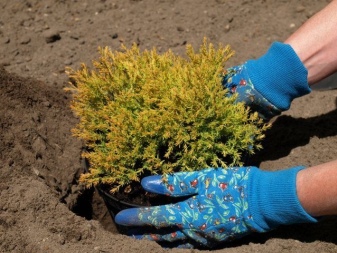
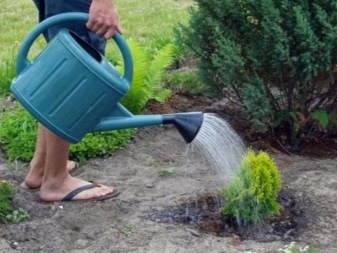
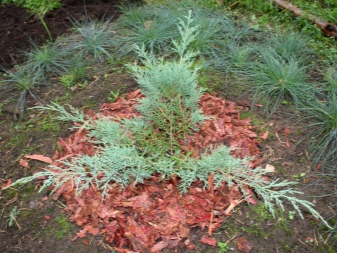
Care
Care for the decorative juniper "Gold Star" includes standard procedures.
- Watering. Juniper will not fully grow and develop in arid conditions, but excessive moisture is dangerous for it. After planting, the young bush is irrigated daily for two months. The procedure is carried out in the evenings, in small volumes. Sprinkling should be done every other day - Gold Star responds best to morning spraying.
- Top dressing. The juniper is fertilized once a year in early spring until the seedling reaches the age of two; it is advisable to use complex compositions for conifers. At a later age, the plant will no longer need feeding.
- Mulching. After planting the plant in open ground, the root area must be covered with straw, sawdust, crushed tree bark or freshly cut grass. The composition of the main shelter is not so important, the main thing is that the mulch helps to retain moisture inside the substrate. The mulch is renewed every month.
- Loosening. Young junipers need to loosen the ground 2 times a year - in spring and autumn. At other times of the year, the procedure does not make any sense. Mulch allows the soil to retain moisture, the topsoil does not dry out, and weeds do not grow under cover.
- Trimming and shaping. Every spring "Zolotoy Zvezda" carries out sanitary pruning - they remove dried and damaged branches, frozen sections of the stem. If the plant has endured the winter cold without loss, there is no need for the procedure. As for the decorative molding, it is carried out on the basis of the design idea of the owner of the site. The length of the shoots is adjusted in early spring, while the shrub is dormant. "Gold Star" is able to form a bole, it is often grown as a small tree. To do this, over the course of 5 years, the lowest branches are removed - in a similar way, you can grow a spherical or weeping version of the shrub.
- Preparing for winter. Despite its high frost resistance, the juniper still requires winter shelter. In preparation for the cold weather, gardeners need to update the layer of mulch, and so that the branches do not break under the weight of the snow that has fallen, they are tied in a bunch and covered with spruce branches.
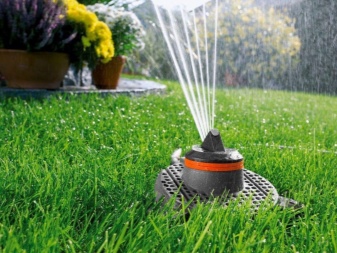
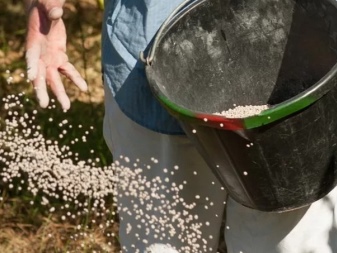
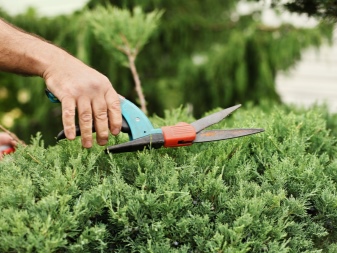
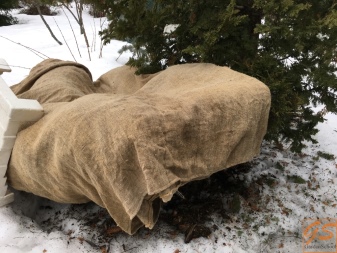
Diseases and pests
The horizontal juniper "Golden Star" rarely gets sick, and there are usually few parasitic insects on this plant, the most common are the following.
- Shield - this pest manifests itself in conditions of prolonged heat, when the air humidity has been lowered for a long time. However, if the gardener pays sufficient attention to regular sprinkling of the juniper, then insects do not appear in the plantings. When a pest appears, the bush should be treated with a solution of ordinary laundry soap or sprayed with insecticides.
- Juniper sawfly - this parasite can be easily eliminated with the help of the drug "Karbofos". If measures are not taken in time, the pest will begin to lay off a large number of larvae, which suck vital juices from the ephedra, lead to its wilting and imminent death.
- Aphid - This is one of the most common insects on the juniper. Usually there are a lot of aphids in places where ants live. All places where parasites accumulate must be cut off and burned. For the purpose of prevention, every year in the spring, they are treated with copper or iron sulfate.
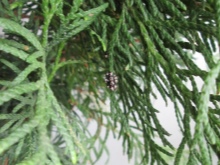

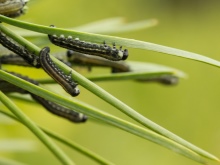
Use in landscape design
Due to its bright color and exceptional unpretentiousness, "Golden Star" has become quite popular in the European and Central part of our country. Juniper is commonly planted to decorate personal plots, as well as recreation areas of city parks and squares, and is used to decorate large flower beds in front of public buildings.
Horizontal undersized juniper looks good both in single planting and in composition. "Gold Star" is a successful tandem with dwarf conifers, as well as large flowering ornamental shrubs. The "Golden Star" is often planted on the top of an alpine hill - in this form, the juniper creates the feeling of a golden cascade. Culture is used to create stylish accents:
- in rockeries;
- in the background a rabatka;
- in imitation of small garden alleys;
- on rocky slopes in metropolitan areas.
Also juniper varieties "Gold Star" are often planted to decorate the area around the gazebo or near summer verandas.
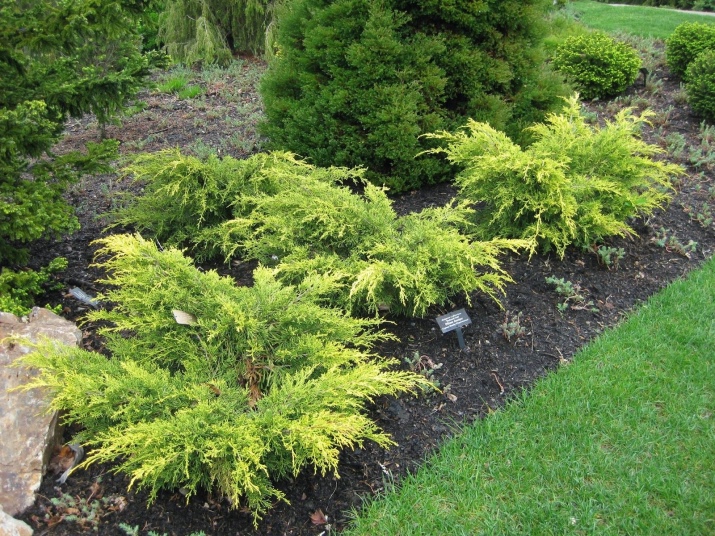
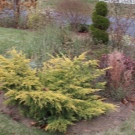
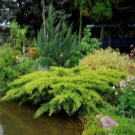
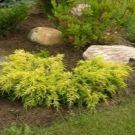
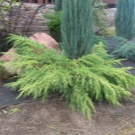
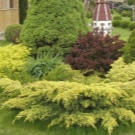
The secrets of growing juniper will be discussed in the next video.



































































The comment was sent successfully.